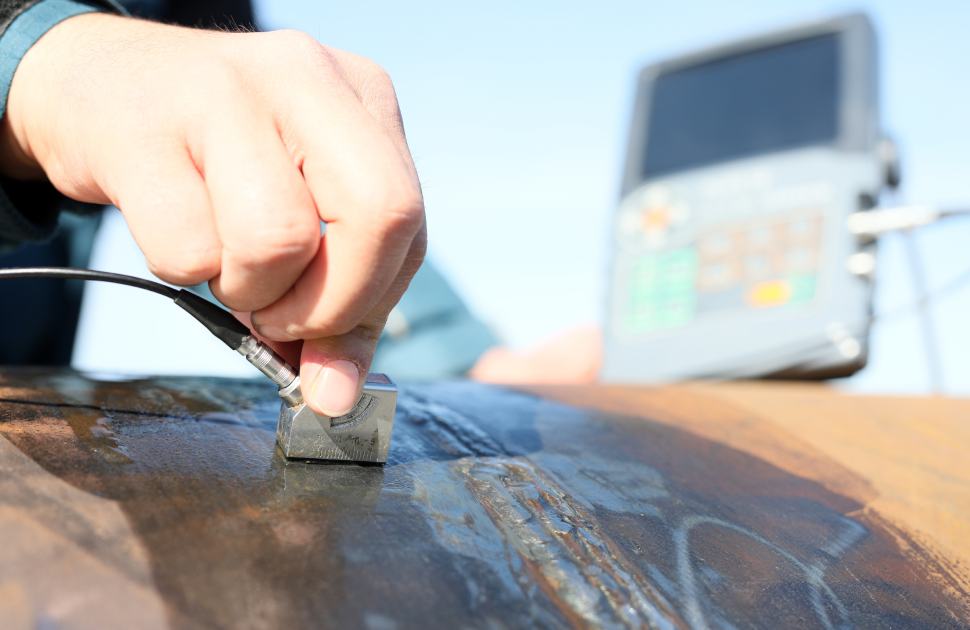Ultrasonic testing is one of the most widely used non-destructive testing (NDT) techniques, utilized for detecting internal defects and irregularities in a wide range of materials. This technology uses high-frequency sound waves that travel through the material being tested and return signals to a receiver, which then analyzes the data to identify any flaws.
Ultrasonic testing is often used in the aerospace, automotive, construction, and manufacturing industries for quality control and to ensure the safety and reliability of structures and components. The technology is particularly useful for detecting subsurface cracks, voids, inclusions, and other internal defects that are not visible to the naked eye.
There are two main types of ultrasonic testing: contact testing and immersion testing. Contact testing involves placing a transducer directly on the surface of the material being tested and transmitting sound waves through it. Immersion testing, on the other hand, involves submerging the object in a liquid bath and transmitting sound waves through the liquid.
During the ultrasonic testing process, the transducer sends high-frequency sound waves into the material being tested. These waves travel through the material until they encounter a boundary between two materials or a flaw within the material. When the waves encounter a boundary or flaw, some of the waves are reflected in the transducer, which then converts the signals into electrical impulses.
These electrical impulses are then analyzed by a computer to create an image of the internal structure of the material being tested. The image displays the location and size of any flaws or defects within the material.
Ultrasonic testing is also capable of measuring the thickness of the material by sending sound waves through it and measuring the time it takes for the waves to reflect the transducer. This information can be used to ensure that materials are within the required thickness tolerance for safety and structural integrity.
One of the major advantages of ultrasonic testing is its ability to detect subsurface flaws, which are not visible to the naked eye. This allows for the early detection of potential problems and the implementation of corrective measures before they become more serious.
Another advantage of ultrasonic testing is that it is non-destructive, meaning that it does not damage the material being tested. This is particularly important when testing expensive or irreplaceable materials.
Ultrasonic testing can be used on a wide range of materials, including metals, plastics, ceramics, and composites. It is also suitable for testing materials at a range of temperatures, making it a versatile and useful technology for many industries.
However, there are some limitations to ultrasonic testing. It is not suitable for highly attenuative testing materials, meaning that the sound waves are absorbed or weakened as they pass through the material. In addition, the accuracy of ultrasonic testing can be affected by the orientation and grain structure of the material being tested.
Overall, ultrasonic testing is a valuable and widely used technique for non-destructive testing. Its ability to detect subsurface flaws, its non-destructive nature, and its versatility make it a preferred choice in many industries. With the continued development of ultrasonic testing technology, it is expected to remain an important tool for ensuring safety and quality in a wide range of applications.

.png)








